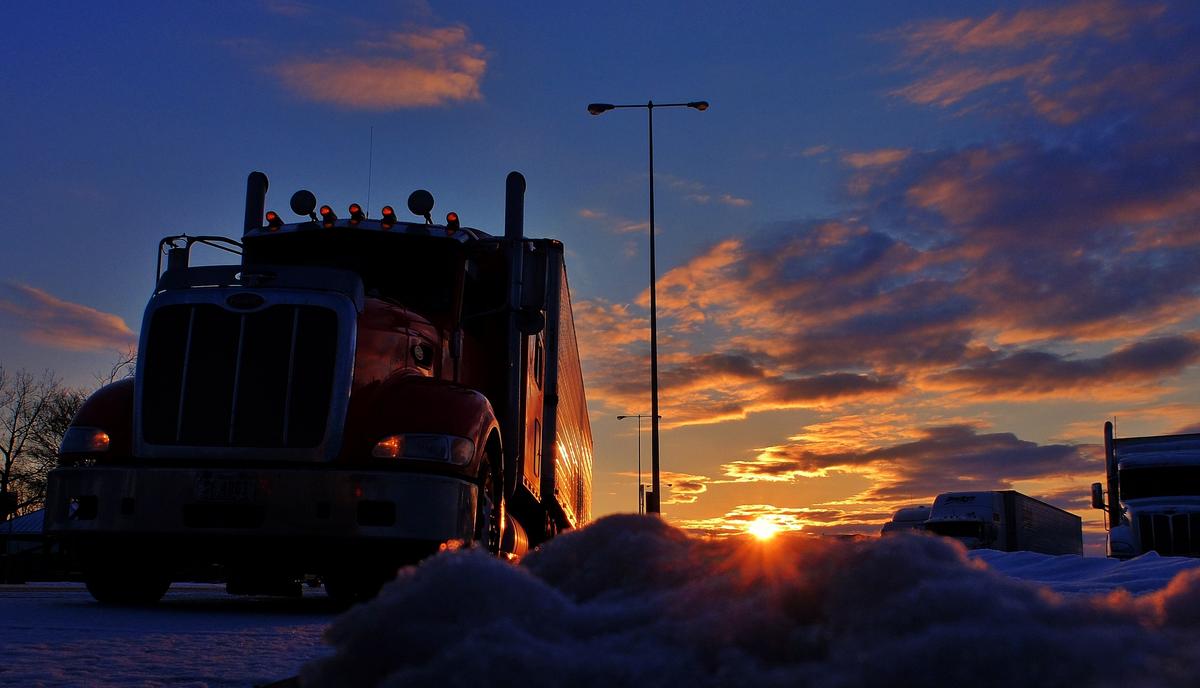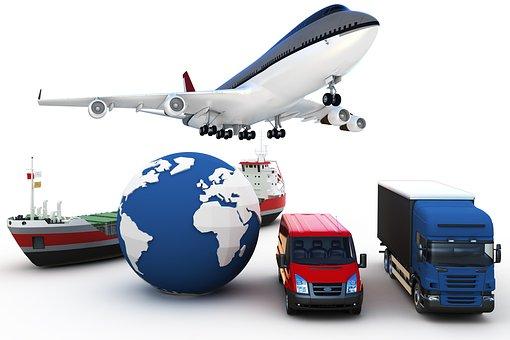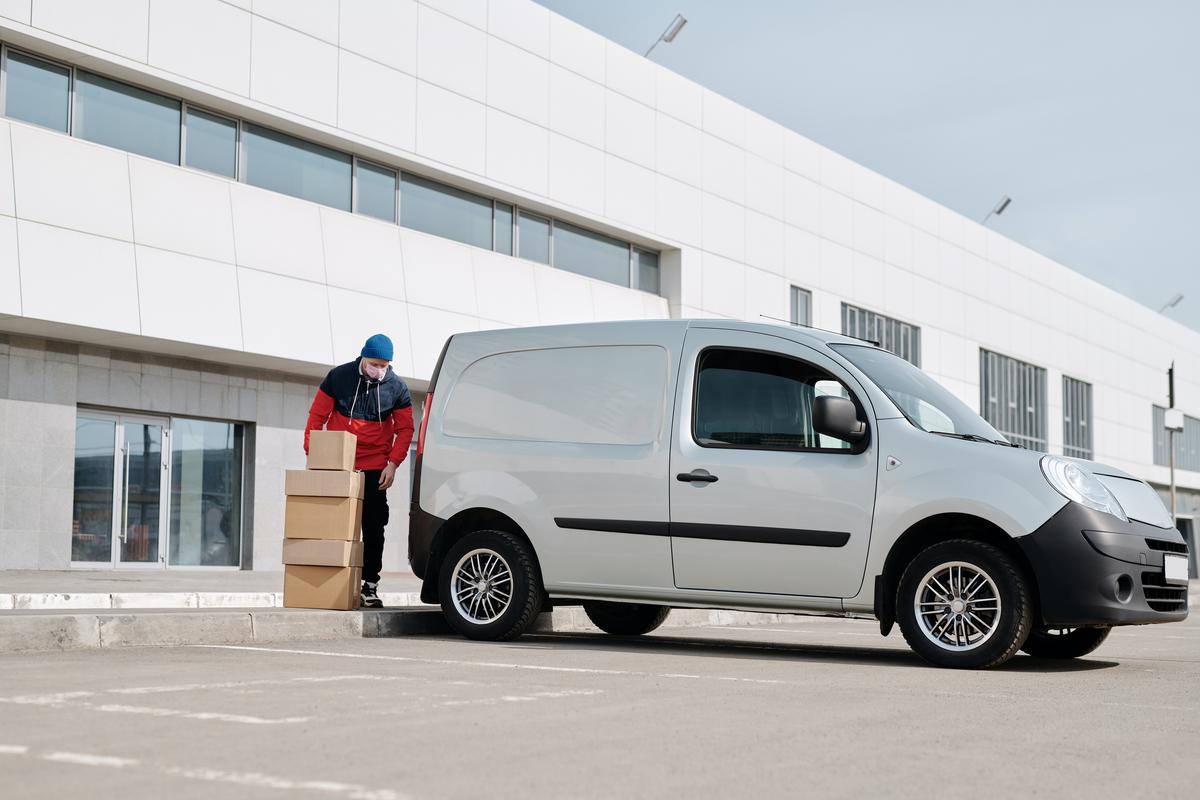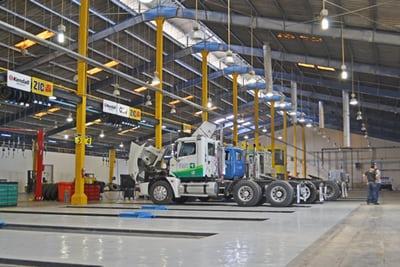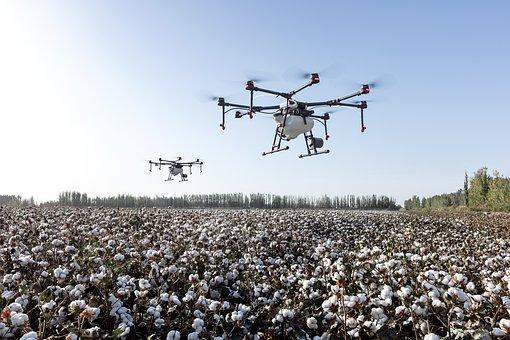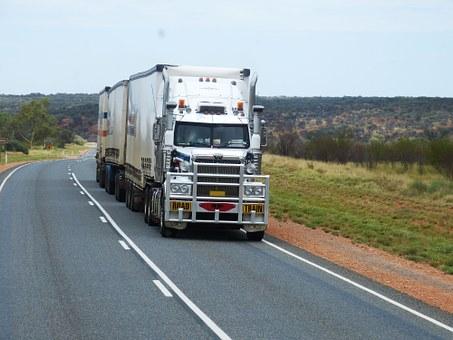Insurance BlogFriday, November 08 2019
Orlando, Fla.—Supply chain volatility is the new normal. Affected logistics stakeholders are diversifying their assets, technology, suppliers, and partner relationships to face ongoing challenges. Among them, Amazon’s expansion, tight labor and space on warehouses and distribution centers, increased volume of returned merchandise, and of course we have to mention tariffs. These are disruptions the supply chain will continue to combat in 2019 and forward. Tariffs As we know, the escalating trade dispute between China and the US doesn't show any signs of stopping, as negotiations have fallen apart multiple times. Domestic ground carriers are hurting, because freight demand is negatively impacted by the high levels of inventory held by U.S. importers. Many other industries aside transportation are fighting hard to adapt to the new trade environment as well. Some of them include telecommunications giants, agriculture, automakers and manufacturers, among others. Returns Increased Volume Also known as reverse logistics, is expected the experience continuous growth in what’s left of 2019 and further, and many shippers seem to be turning to third-party logistics providers to support this area. Mostly triggered by Amazon’s customer satisfaction’s policy, which has helped them earn a great reputation for reliability, consumers return billions of dollars in merchandise they purchased online, and they want the process to be easy and free. The big winner is the customer, and experts don’t see this changing in the near future. Amazon’s Expansion It is no secret that Amazon now has logistics in place to reach most U.S consumers in one day. They announced a rapid expansion of their one-day shipping. Walmart, and other major retailers have challenged their bold move with similar plans, but e-commerce businesses that don't have the right level of resources have reasons to be concerned. Tight Labor and Space Last year, the tight labor market stood out as the overriding challenge for warehouse operations managers. This year, according to the “Warehouse and Distribution Center (DC) Operations Survey,” labor scarcity remain the top challenge. The struggles to find and retain an effective workforce are being done against a backdrop of continued business growth and the ongoing impact of e-commerce fulfillment activity. It feels more or less like trying to fix the engine of plane in full flight. It is a difficult problem to deal with, but not impossible, as shown in the Redwood Logistics case for winning the Top Workplaces 2019 honor by The Chicago Tribune. Redwood is committed to providing an inspiring company culture that encourages comradery, teamwork and self-expression. As the company continues to expand, Redwood's focus remains on supporting a collaborative and creative environment. It’s a frustrating inability to attract and retain a qualified hourly workforce as cited by 50% of the survey respondents. This year’s survey shows respondents are budgeting for change; they’re looking to use more technology and automation; and they are looking to improve their operational processes and controls. Managers responsible for distribution center operations are focused on ways to find efficiencies to deal with the changes brought by e-commerce growth, and help mitigate labor scarcity. For questions about transportation and logistics insurance or quotes, contact us at (321) 206-8035.
Call 321-206-8035 Friday, October 04 2019
Orlando, Fla.—Day after day, here in the U.S. we continue to hear about mega stores that have been a shopping experience staple in every family, deciding to close business. Some others, like Walmart, Target, among many others, even Marshall’s in recent days — have joined the hustle of e-commerce, in order to stay alive, competing not only in quality and price, now — but offering FREE SHIPPING and other convenience terms that ultimately make the end customer value their service more. With a competition that is heating up to fulfill an increasing demand, and up to 15 percent growth forecasted, accurate and efficient Third Party Logistics processes must decrease their costs, while maintaining their customers’ service expectations. That is the key to secure success in the future. Thus, adopting automation is becoming more, and more indispensable. The word automation itself sounds a little scary for some, especially when there is no certainty of how many jobs will end up being displaced, and what programs are being put in place by both the government and the private sector, to retrain the workplace and keep them productive within a healthy economy.
More collaboration between shippers and TPL companies — Third party logistics companies are expected to rely heavily on technology to collaborate, connect, and better engage with customers. The importance of mobile applications—Freight shipments ordering and processing will be possible 24/7 by buyers from anywhere thanks to the agility and mobility brought by mobile applications. Specialized smart technology — Transportation Management Systems type software solutions are expected to lower inefficiency and costs while saving valuable time. Sharing information — Essential to item tracking throughout the supply chain, also to provide a capability to serve trends efficiently and meet flexible operation demands. Global economy—By 2020 many challenges are expected to be faced down to increase growth dramatically, largely due to emerging and expanding global markets on a massive scale. Manufacturer and shipper collaboration —Manufacturers must collaborate with suppliers on production schedules, ensuring raw materials will be readily available. Workflow increase — Automated and system-generated data may allow pallets using GPS technology that may even self-report delivery errors to achieve in-transit, corrections, utilizing advanced sensors where inventories will self-count. Diversification —A transformation from commodity distribution services to more complex organizations offering online ordering, returns processing, product assembly, documentation and inventory management is in order for 2020. Top Notch Staff Management —A well-rounded transportation management system for worker management improvements, from time per task, chosen carriers, invoice accuracy and handling of freight claims management will be required. The following conferences in 2020 pose an excellent resource to jump onto these new trends.
At Florida Transportation Insurance, we help you secure your future, by protecting your present investment. As Florida’s premier delivery, logistics, and courier insurance agency, we understand the demands of your business and how to best protect it from costly risks and liabilities. From Cargo Insurance, to Warehouse/Terminal Coverage. Our professional staff, and specialized local agents are trained and prepared to find insurance solutions that fit your business needs. Contact us for a FREE consultation! Diana Munoz, CRIS Email Diana Munoz Thursday, September 05 2019
Orlando, Fla.—As demand for deliveries whether you are a restaurant or a retailer, more businesses may need commercial car insurance for delivery drivers. A Commercial Auto Insurance and Delivery & Logistic Insurance might be an appropriate fit. Also, additional coverage options like Hired and Non-Owned Auto Insurance can cover employee accidents that happen while using their personal vehicles for business errands. Commercial Auto Insurance provides liability protection when your drivers get into an accident while driving a company-owned vehicle. It can pay for property damage or physical injuries your driver causes, plus related legal expenses. It can also cover medical expenses if your driver is injured in the accident. But note— drivers of most delivery-based businesses probably use their own vehicles to make deliveries. A Commercial Auto Insurance policy doesn't provide coverage for drivers involved in an accident while driving their own personal vehicle. If you file a claim on your personal car insurance for a vehicle you use for work, your car insurance company may deny your claim simply because some business uses violate the terms of your personal car insurance policy. You Need Commercial Auto Insurance When You:
FUN FACT: Domino's says its delivery drivers will log 4 million miles on Super Bowl Sunday, the busiest pizza-delivery day of the year. A Lot of People Ask Us — Is Pizza Delivery Insurance Real? You won’t find it by that particular name, but as we mentioned, there are a few insurers out there that do offer special policies, or supplemental coverage to a personal policy, specifically for delivery persons. Ask one of our agents at Florida Transportation Insurance about your viable options. As food delivery demand increases, many of these drivers face the same challenges, of getting to their final destination before the meals get cold, that means, the risk of having accidents also increase. Insurance companies know it. As the local leaders in last mile, same day delivery, logistics, and courier insurance in Florida, we’ve developed exclusive carrier relationships that enable us to find the best coverage options at the most affordable price to our clients. Not only can we provide you with proven insurance products, but we can also provide a great service as you grow your business. Our agents understanding of the courier and delivery industry enables us to design risk strategies that protect and serve all areas of your business, including the most specialized. In addition, our specialized carrier network and knowledgeable underwriters can offer you insurance coverage that are unmatched in the same day, expedited delivery and logistics industries. Business We Insure
Give us a call at Florida Transportation Insurance at (407) 501-8275, and we will be happy to assist you finding the right insurance solutions for your type of commercial vehicle. Wednesday, August 07 2019
Orlando, Fla.—In Florida, when the Governor issues a state of emergency, FDOT and others allow certain trucking regulations to be temporarily relaxed or lifted. These apply to road use, size and weight restrictions, hours of service and other issues. Hurricanes, floods, fires, terrorism, and other potential hazards pose serious threats to businesses everywhere, and Florida is no exception. For that reason, it is of vital importance for businesses to be always prepared, and to safeguard the uninterrupted health of our State’s economy. Fleets preparing for a natural disaster should:
In the event of a natural disaster, the following resources will provide you the needed information to proceed with your business operation according to ordinances in place at the time.
It is of utmost importance to keep this information accessible in a safe place while in and off the road. Prior to a storm, it is a good practice to stock up on extra parts, including tires and hydraulic hoses. Finding safe ground for the fleet vehicles and enough fuel to sustain the operation when a disaster strikes, is one of the most important tasks during the preparation stage. Reporting all response activities is extremely important, especially if the Federal Emergency Management Agency (FEMA) will assist you with reimbursements. Keeping records of the amount of hours a machine ran; the amount of hours the staff worked; if your personnel were held over you must document for how long, even in their rest period. Insurance claims need to be fully documented about any loss claimed. When disaster has struck and your organization has been called into action, there are things a Fleet Manager needs to consider in order to support the response force. Knowing how to work within a State of Emergency, and under a formal Incident Command Structure, is paramount in order to execute an effective emergency response. Three major guiding principles that a fleet manager should consider in preparing to respond to an emergency are : Survivability – Does your plan actually work, and can it operate in a disaster? Do you test your plan regularly, and make changes from lessons learned? Does your plan protect your supply chain? Adaptability – Is it flexible? Is there room to adapt to the changes of the disaster? Does it spell out who’s in charge of what if one or more key persons is unavailable? What if staff are on vacation, out sick, injured or out of touch? Who has the authority to make decisions if you are out of town? Sustainability – Can you survive beyond 1-2 days? How do you provide fuel for days, weeks, months? How will you staff your shops after 3-4 days? How long could you be fully independent of the world (supply chain, fuel providers, etc.)? Are there things you can do to increase your independence? Thursday, July 11 2019
Orlando, Fla.— We have seen how the right technology, employed in the right way, can create bridges. A recent example is commercial drone delivery. The delivery drones market is expected to grow at a significant pace during the forecast period, due to the surging application of drones in the commercial sector. Companies such as Amazon, UPS, Google, and other delivery service providers are experimenting with Unmanned Aerial Vehicles (UAV) for home delivery of goods. Recently, Airbus unveiled Skyways drone delivery services in Singapore, which is expected to fuel the market growth. In 2016, the worldwide shipment of drones exceeded 100,000 units and the total market value was more than $2 billion. In the United States alone, the value of drone activity rose from $40 million in 2012 to $1 billion in 2017. According to a McKinsey report, by 2026 commercial drones will have an annual impact on US GDP of $31 billion to $46 billion. The market has been segmented by e-commerce, Quick Service Restaurants (QSR), convenience stores, healthcare, and others. The e-commerce segment of the market is expected to grow at the highest rate during the forecast period as there have been a high usage of drones for the delivery of products in the e-commerce industry. North America is expected to witness the highest growth during the forecast period. High production and increasing applications of delivery drones in commercial sectors are the major reasons for the high growth of this market. The key players in the delivery drones market are Amazon (U.S.), United Parcel Service (U.S.), JD.com (China), Uber Technologies Inc. (U.S.), EHANG (China), DJI (China), Skycatch Inc. (U.S.), Airbus S.A.S (France), Zipline International Inc. (U.S.), Alibaba (China), Flirtey (U.S.), FedEx Corporation (U.S.), and Google (U.S.). Regulations are the main challenge for the drone industry It’s clear that flying a drone above your picnic spot for amazing shots isn’t the same as delivering a package someone paid for. In the first case, you’re using a drone as a hobby, and in the second case, you’re using it for commercial purposes. Unlike personal UAVs, drones used for commercial purposes have to meet certain requirements. In the US, the Federal Aviation Administration (FAA) controls both personal and commercial uses of drones today. In addition, several states have their own specific requirements. Stringent regulations by the Federal Aviation Administration (FAA) and logistical challenges are restricting the use of delivery drones. It is also expected that poor infrastructure and complex terrain will be one of the major logistic issues for delivery drones. Therefore, high expertise and proper knowledge are required to maneuver delivery drones. Furthermore, the limited range of delivery drones (within ten km) is a major restraint for the market growth. With the cost of deliveries in rural areas estimated to be five times greater than in urban areas, using drones at scale can help equalize economic opportunity and access to affordable consumer goods between regions by bringing down the cost of rural logistics. The global commercial unmanned aerial vehicle (UAV) market is expected to reach $13 billion by 2025. However, they haven’t experienced their boom yet. The main reason for this is — regulations imposed on the drone industry. Tough rules for drone operations slow down adoption. This means that the commercial applications of drones in business are being limited. Although drones have proven to be highly efficient, they can’t work at their full capacity. And now, we are about to experience a new class — The Giant Dones — capable to deliver packages farther and faster. They are more environmentally friendly, and could completely change the cargo industry. These types of drones offer reduced carbon footprint but on a much larger scale. Focused on rural areas and shuttling goods between distribution centers, cargo drones are designed to land in the water or take off vertically, making drop-offs even more flexible. Thursday, June 06 2019
ORLANDO, Fla. —As we all know, Congress passed the 2018 Farm Bill, legalizing hemp. The Farm Bill removes hemp from the Controlled Substances Act and allows farmers to pursue federal hemp cultivation permits, while individual states can regulate the industry within their borders as they see fit. Already, 40 states have established hemp cultivation “pilot programs” for industrial and commercial purposes, although the plant has been strictly regulated. Hemp is primarily a cheap source of CBD, which has become a hot commodity, and the passage of the Farm Bill ensures that people who farm and create products with CBD are protected from prosecution. The federal legalization of hemp would also undoubtedly attract investors and businesses from outside the U.S. The USDA’s legal opinion basically reiterated many of the changes specified in the 2018 Farm Bill. The memorandum stated that hemp has been removed from the Controlled Substances Act (CSA) and that states and Indian tribes may not prohibit the interstate transportation of lawfully marketed hemp products, although they do have regulatory control over the production of the crop within their jurisdictions. About its transportation, too many questions remain. Recently, there was a case of a great-grandmother from Tenessee entering one of Disney’s theme parks who was arrested for carrying CBD oil. Despite having in her possession a note from her doctor, certifying its medical use for her chronic arthritis condition, was arrested. She spent 12 hours in jail and was trespassed from Disney property before being released on $2,000 bail. The charges were later dropped. In airports and airlines, the industry is also getting a boost from the new TSA ruling allowing passengers to carry on all FDA-approved medical marijuana products as well as certain types of CBD. In May 31st, hemp businesses together with regulators, scientists, and other stakeholders to assist with the “process of reconciling” varying state and federal laws. For example, In Idaho, the Ada County prosecutor charged a trucker, with illegally hauling hemp from Oregon into Idaho. The USDA opinion and disagrees with this high profile case. There has also been confusion over varying state laws regulating hemp-derived CBD in food, lotions and dietary supplements, substances that have become enormously popular among consumers. Whether recent regulatory developments will impel the Ada County Idaho Prosecutor’s office to drop charges against the above-mentioned case, and two other truckers remain to be seen. Originally, hemp cultivation became illegal in the U.S. in 1937, under provisions in the Marihuana Tax Act. In the intervening eight decades, American culture has steadily warmed to the idea of reviving the agricultural commodity and its many commercial uses. The hemp-derived CBD market was estimated at $591 million in 2018, and it was expected to grow 40 times its size—to $22 billion by 2022. The rapid growth will be supported by an anticipated explosion in distribution channels for these products in the next few years. For now, it is a matter of time, when the large alphabet soup of agencies involved in the process, and that are acknowledging the legality of hemp continue to help and keep the public informed. Saturday, May 04 2019
ORLANDO, Fla. —In 1946, then President Dwight D. Eisenhower signed into law the Federal-Aid Highway Act of 1956 creating our nation’s system of interstate highways. On May 16, 1957, Congress designated the third Friday of May each year as National Defense Transportation Day, and in 1962 Congress included the whole week within which the Friday falls as National Transportation Week. Separate from the Truck Driver Appreciation Week, which is celebrated in September, the National Defense Transportation Day is a United States Federal Observance Day to recognize the importance of transportation and the people who support and protect the system in this modern era. A proclamation is signed each year by the current President of the United States. So, the third week of May is when we celebrate National Transportation Week every year. As part of National Transportation Week, events and ceremonies will be held honoring and recognizing the importance of transportation in communities across the country. Truckers are an essential part of everyday transportation for almost every industry including, retail, manufacturing, automotive, and food and dining. First-year truck drivers have the opportunity to see the country, but will also be developing their driving skills. There are both positive and negative aspects to driving a truck and in the first year of driving, each trucker is sure to become acclimated with these different situations. According to the Bureau of Labor Statistics, trucking has a higher than average rate of growth, with twenty-one percent rate of growth and millions of available jobs on the hauling market. In fact, there continues to be a driver shortage year after year. Driver’s wages are more than twice as high as the federal minimum wage and will allow most to provide for his or her family and live a comfortable lifestyle. Trucking is physically demanding and being away from family, friends, and familiar areas can be emotionally and mentally exhausting, but once drivers settle into their new life as professional drivers, the benefits can far outweigh the negatives. There are an estimated 3.5 million truck drivers in the U.S. The following important events are taking place during the month of May and you may still have time to join. The Final Mile Forum & Expo
NASSTRAC SIP-N-SHIP: CHICAGO SHIPPERS SUPPORT INFRASTRUCTURE WEEK Join NASSTRAC for a fun evening of networking with truck-loving shippers as we show support for Infrastructure Week. We will be joining more than 400 Affiliate organizations, companies, and cities that are hosting 100+ events nationwide to celebrate the 7th Annual Infrastructure Week, May 13-20. Join our kickoff! Let’s #BuildForTomorrow. Starting now. The event will be held at Redwood Logistics in downtown Chicago! Tuesday, April 02 2019
ORLANDO, Fla. —Between 2016 and 2018, major developments in logistics led to the consolidation of major shipping companies. The result is fewer shipping carrier options for shippers. It has become difficult to survive as an independent shipper with a fleet of cargo ships. So in order to compete, shipping companies have joined forces to form shipping alliances. By the end of 2019, further consolidation is considered a double-edged sword because it may mean higher rates due to less competition. However, through consolidation, shipping companies will offer top-tier customer service and increased capacity. A few important aspects reshaping the Logistics and Supply Chain Industry this year include:
There is no scarcity of challenges in this entire process of transformation, but the opportunities are there for those who dare to tap into it. Thursday, March 14 2019
ORLANDO, Fla. —As we all know, mandating the use of electronic logging devices (ELDs) was aimed ultimately at reducing accidents and improving safety, but an academic team led by Alex Scott, assistant professor of supply chain management at Northeastern University’s D’Amore-McKim School of Business, analyzed Federal Motor Carrier Safety Administration data to assess how enforcement of the ELD rule was affecting three safety-related metrics: compliance with hours of service; accident counts; and the frequency of unsafe driving. What they discovered was research that shows mixed results toward that goal so far. While HOS compliance – the primary target of the ELD mandate – improved considerably, the study found that there was no decrease in the number of accidents for independent owner-operators and carriers with small fleets. It also found that unsafe driving infractions for small companies and owner-operators actually increased relative to large asset-based carriers. Aside from safety levels, a drop in productivity as a result of the ELD mandate has been a significant issue for both large and small carriers – although there’s evidence that drivers that effectively manage their hours post-ELD have been able to generate increased profits. Although full implementation of the electronic logging device mandate is yet months away, data gleaned from currently ELD-compliant operators is already informing the Federal Motor Carrier Safety Administration’s plan to propose changes to the bedrock hours-of-service rule, stated FMCSA Ray Martinez in his upbeat address to members of the Truckload Carriers Association on March 12. When the pre-rule was issued back in August, FMCSA said it came in response to “widespread congressional, industry, and citizen concerns and seeks feedback from the public to determine if HOS revisions may alleviate unnecessary burdens placed on drivers while maintaining safety on our nation’s highways and roads.” Martinez said the agency was continuing to evaluate the comments and is “very close” to deciding whether it can “move forward with an NPRM that would provide definitive text” to launch the next phase. Recently, a Minnesota lawmaker has made good on his promise and reintroduced legislation that would exempt some truckers from Electronic Logging Device regulations. Early in February 2019, Rep. Collin Peterson had plans to reintroduce two pieces of legislation intended to provide certain truckers with relief from the Federal Motor Carrier Safety Association’s ELD regulations, especially for small trucking companies most responsible for agricultural products. The bill would mostly benefit farmers and small businesses in rural America. These bills had originally been introduced back in May of 2018, did not get enough support from other lawmakers at that time when the Speaker of the House was Paul Ryan. Given the changes in that post, a new opportunity to reintroduce the bills has now emerged and along with recent research developments, a different outcome might be possible. Both bills would still require that truck drivers use paper logs and that they comply with all of the FMCSA’s Hours of Service regulations. Monday, February 04 2019
ORLANDO, Fla.—2019 will be crucial for retailers as the automation strategies seem to be gaining ranking in their list of priorities for this year. According to Forbes Magazine last year, the fascination for automation relies upon the fact that it lowers the cost to consumers of accessing a market, so more people can afford to buy in. So, even though there are fewer jobs supporting the same amount of revenue as before, there are net the same or more jobs because consumers are buying more – there is more overall revenue. What’s holding everyone back so far? The biggest fear that as automated work requires more skills, those without those skills or access to training to gain those skills can get left behind. Would it really get rid of so many workers’ jobs or the so-called “death of the worker”? Retail is currently a business model based on low skill, low pay, high turnover labor force. With that said, as the world moves forward to automation, not only workers will need to obtain new skills and get retrained – but retailers will have to re-learn how to retain those highly skilled workers and be financially ready to sustain a different payment plan. FOR EXAMPLE —A New Model For Online Grocery Fulfillment According to the report from CommonSense Robotics, retailers like Target, Amazon, Kroger and others have invested $28 billion in e-commerce in just the last 18 months. With an annual market of nearly $800 billion, groceries are strategic hence the reason why so many companies are trying to win the grocery wars. According to CSR, retailers incur a pure loss of $5 to $15 on every manually picked online grocery order. The loss gets gets worse when the number of online orders increases. It is for that reason that moving from in-store manual picking to a dedicated facility to solely support e-commerce is a model many retailers see as the logical next step. To reduce costs and increase efficiency, CSR has perfected the use of robotics to select and retrieve the items requested by each customer. CSR recently opened its first fully automated fulfillment center which offers a stark contrast to picking orders manually. Automation is being utilized by some retailers to solve for scale and economics. However, the challenge is that most automation vendors can only enable next-day delivery propositions. Given that same-day delivery rollout increased by 500% in 2018, this seems like a solution for 2017 and not the future, according to CSR. Some believe that the optimal strategy for grocery retailers is to maximize sales per square foot inside its stores and leverage an offsite micro-fulfillment center to fulfill online grocery orders. D3 State of Retail Supply Chain report, an industry survey conducted by EyerforTransport and Quintiq— with more than 200 retailers, e-tailers and manufacturers on a range of issues, revealed that companies are less focused on forecasting capabilities and more focused on implementing automation in 2019, especially in the warehouse. Half of retailers and manufacturers reported that warehouse automation is an "advanced or immediate priority," according to the survey. |
Terms & Conditions | Copyright | Privacy Policy
© 2020 Florida Transportation Insurance
Insurance for Transportation Companies, Insurance for Public Transportartation, Transportation Insurance Florida
